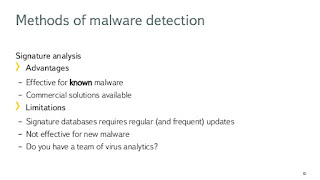As of now, there are over two billion mobile phone devices across the world (including feature phones and tablet devices). When it comes to the operating system (OS) or software that powers these smartphones, Google’s Android has clearly emerged as the winner in the ecosystem, as compared to Apple’s iOS or Microsoft’s Windows Phone, with a lion’s share of 80 percent.
Discerning Malware Through Machine Learning
Studies and methods to detect malware in Android can be dated back to its release in 2008. A plethora of software tools such as sandboxes and debuggers have been developed and used for malware analysis since then. However, with the staggering rise of malware outbreaks in the recent times, it is difficult to curtail with just these tools alone. This issue urged computer scientists and researchers come up with machine learning (ML) methods.
Earliest studies have explored ML techniques such as classification to differentiate harmful applications from the genuine ones. Android Package Kits (generally known as ‘.apk’ files) which are Android’s application files, were extensively tested through ML algorithms to look for malicious software code. These studies also analysed the code for discrepancies, which may leave applications vulnerable to attacks.
But, the challenge here lies in capturing the exact features for ML in applications. To tackle this, some studies used support vector machines (SVM), for identifying different types of malware classes. Along with this, these studies have made use of tools like control flow graph (CFG) for representation of the application learning flow to boost detection. What was evident from these studies was the feature extraction was made easier compared to previous studies. Subsequent research on identifying Android malware through ML saw Bayesian classification approaches that have seen significant results in achieving a higher detection accuracy.
Types Of Malware Detection
Malware detection in computers is generally divided into two types, static analysis and dynamic analysis. The same is applicable to Android OS. Static analysis deals with examining the functionality of an application/file without executing it, whereas dynamic analysis examines the file by running it in a computer (or even sandbox tools) to investigate the behaviour of the malware in depth.
Botnets
Another form of malware which is quite popular lately is botnets. What was once omnipresent in computers has now spread to mobile devices such as smartphones. Device networks affected by botnets can act independently and thus pose a peril to the mobile ecosystem. Generally, botnet attacks are done without the knowledge of the user knowing it, and are now being deployed on smartphones powered by Android. All critical data can be stolen through distributed denial of service (DDoS) attacks such as HTTP Flood, Ping Flood and so on regardless of the mobile platform. Although ML detection has emerged to tackle DDoS, it has yet to successfully make a mark in the mobile space.
Conclusion
ML models bring in a proactive approach to eliminate malware. But as mentioned earlier, the feature extraction bit is still to see a strong improvement. For example, there is a possibility that a particular part of a malware can be avoided in the output if features do not match closely in the training. Therefore, a rigid framework for ML is always suggested to counter modern shapeshifting malware, and the adversarial impact it can afflict sensitive information.


















0 Comments